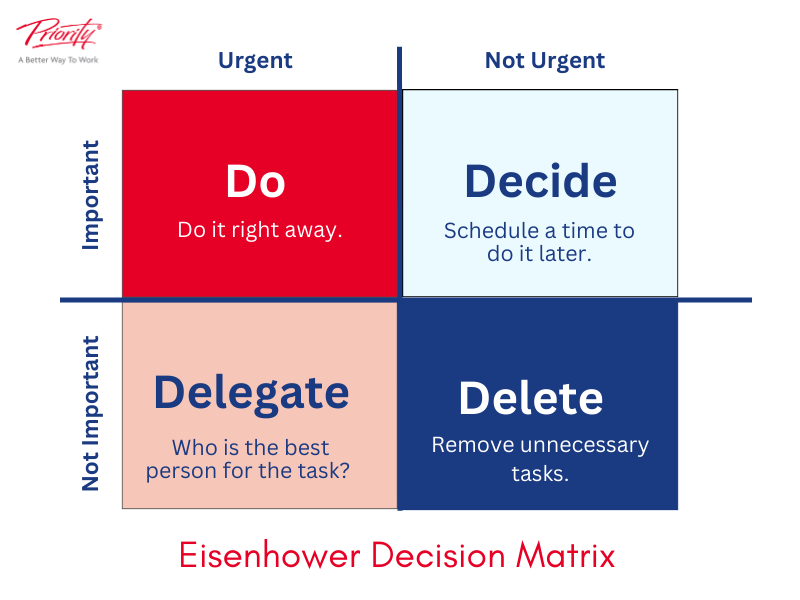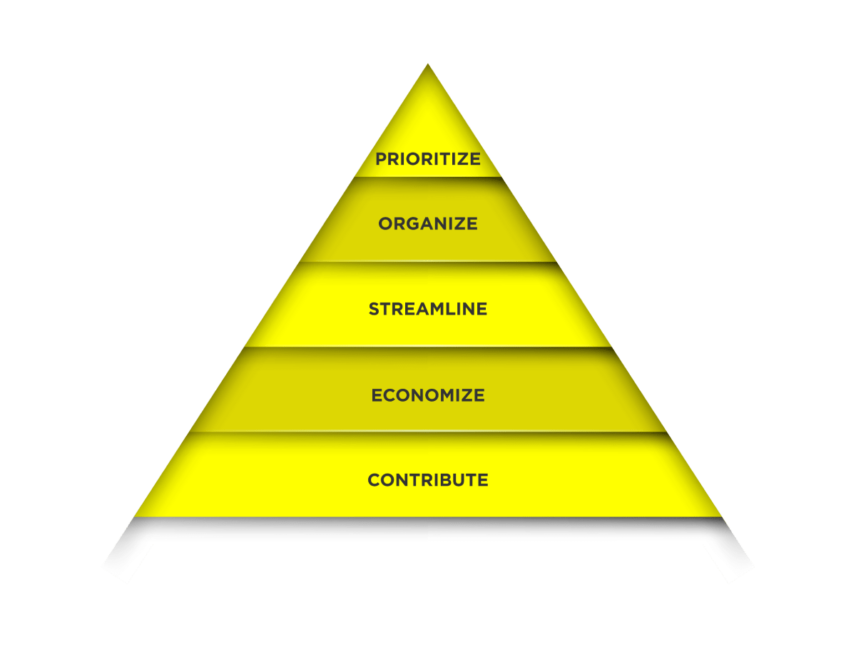Regardless of your lifestyle or occupation, there are many time management techniques that can be used to your advantage. If any of the productivity challenges we’ve listed have resonated with you, we’re positive that you’ll find the right time management technique in our list below.
There are strategies for minimising distractions, prioritising tasks, boosting motivation, and other amazing time-management benefits.
Pick one of the following techniques to try the next time you start a project.
Popular time management techniques to Increase Your Productivity


These proven techniques have been used in several industries, across many different roles. Let’s find the right time management method for you.
1. Pomodoro Technique
The Pomodoro Technique is incredibly simple because of how effective it is; you don’t need anything more than a timer to use it.
Essentially, you set a timer for 25 minutes, and focus on a single task until the timer runs out. Then you start a five-minute timer to have a break — we recommend stretching your legs or having a quick healthy snack. That entire half hour (25 minutes of work, 5 minutes of break time) is a pomodoro.
After four total pomodoros, take an extended 30-minute break.
This technique is incredible for anyone who struggles to stay focused for long stretches of time.
2. ABCD analysis
The ABCD Analysis method is perfect for those who need help prioritising the right tasks. It’s another simple system; you write a list of tasks that you need to complete and categorise them into four different labels (A, B, C, or D).
- A items cover any important tasks that need to be completed with urgency. These take top priority.
- B items are tasks that are important but not necessarily urgent.
- C items are the least urgent and take up less importance than B or A tasks.
- D items are not urgent or particularly important. This means they can be postponed or potentially discarded.
Give it a try next time you write a to-do list!
3. Pareto Analysis
Pareto analysis, also known as the 80/20 rule, follows the principle that 80% of results come from 20% of the work put in. For example, 80% of your business’s profits may come from 20% of your clients or 80% of your web traffic may be due to 20% of your advertising.
This principle should be applied when analysing your workload and progress. If you’re most productive in only 20% of the day, what can be prioritised in that time frame and what can be left for the other 80%?
4. Eisenhower Method
The Eisenhower Method, otherwise known as the Eisenhower Matrix, is quite similar to the aforementioned ABCD Analysis technique. Essentially, your tasks are placed on 4 different quadrants of a chart, sorted by urgency and importance.
This can be seen in the image below.


Do the most important and urgent tasks first, delay the tasks that are important but not urgent, delegate the high urgency but low priority jobs, and discard the rest.
5. POSEC Method
The POSEC Method is another prioritisation technique that is visualised by a pyramid, similar to Maslow’s Hierarchy of Needs.
POSEC stands for:
- Prioritising
- Organising
- Streamlining
- Economising
- Contributing


The first step is to prioritise tasks by assessing their importance and urgency.
Next, organise these tasks in a to-do list or similar format.
Streamline these tasks by simplifying them, eliminating unnecessary steps, and increasing efficiency (this can be achieved by bundling certain tasks together).
Economising is the process of managing time and resources by avoiding time wasters and delegating jobs when possible.
The final step is contributing, which means setting aside time to give yourself, your loved ones, and even your community some support. This will keep your energy and motivation high.
6. Plan uninterrupted time to focus on work
Schedule some time in your calendar to solely focus on a single task. This time should be free from distractions, interruptions, and other productivity setbacks.
We recommend working in a quiet location, silencing notifications from your devices, and rewarding yourself with a self-care activity when your work is complete.
7. Kanban
Kanban is a 30-second Japanese time management strategy that translates to “signboard” or “billboard”.
The Kanban technique is all about visualising your work by organising tasks into 3 different columns:
- To-do
- Doing
- Done
You can colour-code tasks by their level of urgency or by category, like labelling work-related jobs blue or highly-urgent tasks red. The technique works best when you only have a maximum of 3 tasks in the “doing” column. This prevents you from becoming overwhelmed by too many tasks in progress.


8. Minimise distractions
Find a quiet place, put your phone into focus mode, and try to minimise all distractions in your environment.
We recommend only keeping the things that you absolutely need in arm’s reach, and placing all other devices in a separate room if possible. This will significantly reduce the chances of you becoming distracted or being interrupted by a noisy device.
9. Organised to-do lists
Streamline your to-do list by placing the high-priority jobs at the top of the page and using easy-to-understand terms. Programs and apps like Microsoft ToDo make this process extremely simple. We recommend using verbs at the start of your tasks to simplify the language and understand the jobs at a glance.
For example, “pick up birthday cake from bakery after 10 AM” instead of the clunky “the birthday cake is ready to pick up at 10 AM from the bakery”, or the confusing “birthday cake 10 AM”. You can also highlight tasks with different colours to visualise different kinds of jobs, or create subtasks to ensure you don’t miss any crucial steps.
10. Put on your game face
Prepare yourself mentally and emotionally for a challenge or task. Your attention is focused and you adopt a determined or confident demeanour.
The phrase is often used in the context of sports, but it can be applied to any situation where you need to perform at your best, such as a job interview, an important presentation, or a difficult conversation.
In conclusion, incorporating popular time management techniques into your daily routine can significantly enhance your productivity levels. From the Pomodoro Technique to the Eisenhower Matrix, there are numerous strategies to choose from based on your preferences and work style.
Experiment with different techniques, identify what works best for you, and make it a habit. Remember, effective time management is a skill that requires consistent practice and refinement. By mastering these techniques, you can regain control of your time, accomplish more in less time, and achieve greater success both personally and professionally. Start implementing these techniques today or try a time management course to unlock your full productivity potential!
